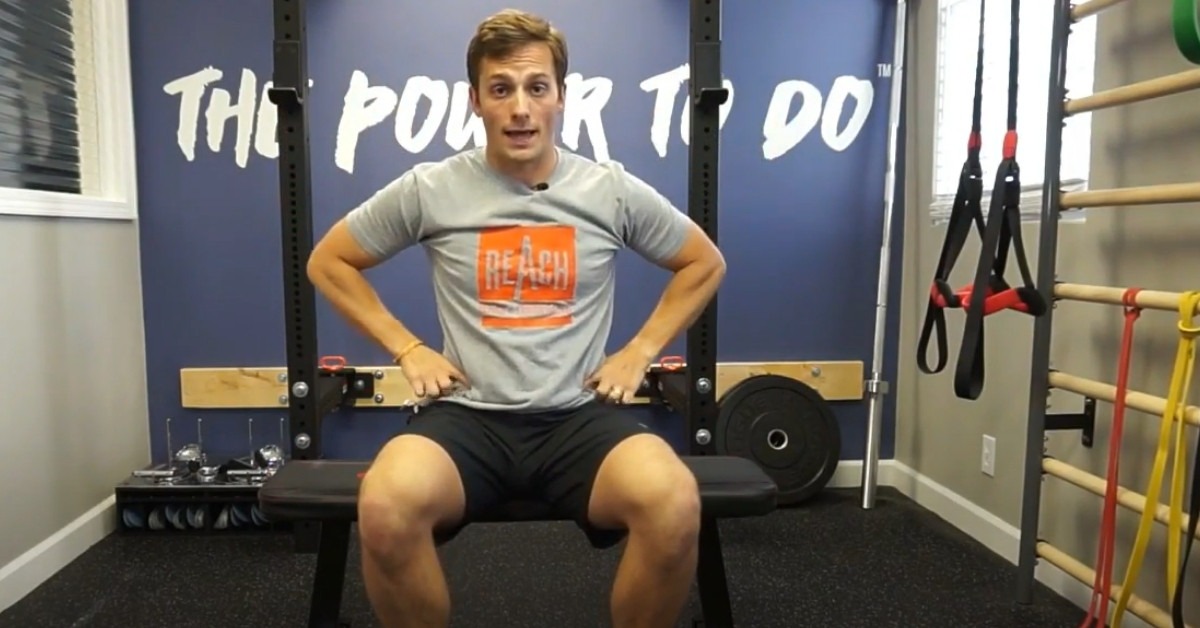Breathing For Core Stability
One of the primary roles of your core is to provide stability in the lower back, abdomen, chest, and pelvis. A properly functioning core will give you the stability necessary for efficient movement in your arms, legs, and neck. Unfortunately, many so-called core exercises don’t do enough to improve core stability.
Approaches like intra-abdominal pressure breathing for core stability have proven to be effective to help build the foundation you need for a stronger core. You can learn this method by working one-on-one with a chiropractor in Plymouth, MI trained in Dynamic Neuromuscular Stabilization (DNS), such as REACH Rehab + Chiropractic.
The Concept Of Breathing For Stability
Diaphragmatic or (often referred to as) belly breathing delivers postural stability because it creates intra-abdominal pressure by engaging your abdominal muscles, diaphragm, and pelvic floor in synchronicity. Each inward breath contracts the diaphragm muscle downwards, increasing intra-abdominal pressure. This approach also helps fill your lungs more efficiently.
We’re all good a breathing, correct? Otherwise, we would not be alive!
Standard breathing as we know it is for respiration — oxygenation of the blood. What you may not know is breathing’s second function is postural stability. The internal pressure pushing against the spine from a deep belly breath helps improve overall spinal stability, efficiently.
Belly breathing creates intra-abdominal pressure by using all four layers of abdominal muscles, pelvic floor muscles, back muscles, and the diaphragm.
To help you understand the breathing for core stability concept, think about how anything that is fully inflated is harder to press down compared to a semi-inflated unit, e.g., a sealed can of Coke versus one that’s been opened. Consistent intra-abdominal pressure delivers the stability necessary for efficient movement.
How To Use Your Diaphragm - Belly vs. Chest Breaths
During diaphragmatic breathing, the stomach rises and falls. You’ll also experience the sensation of stretching and expansion in your stomach. With chest breaths, you’ll only notice chest and shoulder movements.
Here are the steps to perform basic diaphragmatic breathing:
- Lie down on a comfortable flat surface.
- Bend your knees with feet flat on the floor
- Place one hand on the middle of your upper chest
- Place the other hand just below your rib cage on your belly button
- Inhale and exhale while keeping your chest still
Do 10 breaths for 3-4 sets (five minutes total) to become more comfortable with your diaphragmatic breathing. As you become more comfortable, you can try this breathing method while standing or seated on a chair where it will be more challenging to engage.
How To Breath 360 Degrees Into Your Abdomen
Breathing 360 degrees enhances the use of the diaphragm and other accessory breathing muscles to maximize your ability to create intra-abdominal pressure, thus your core’s ability to stabilize your spine and pelvis as efficiently as possible.
A positive side effect of this type of breathing is that it can deliver stress relief and reduce muscle tension.
Here are the steps to follow to breathe 360 degrees into your abdomen:
- Get into the “child’s pose” position (see video above)
- Stretch out your hands above your head
- Keep your shoulders at the ear level
- With your forehead on the ground, breathe toward your waistline
- Watch for the sensation of 360-degree expansion around the waistline of your gym pants or shorts
How To Maintain Pressure On The Exhale
Maintaining pressure on the exhale improves the efficacy of your breathing exercise even further. If you’re new to diaphragmatic breathing, it’s best to learn how to maintain pressure lying on your back. Here’s what you should do:
- Lie down on a comfortable flat surface facing upwards
- Bend your knees
- Place your lower leg or feet on a chair or bench
- Create the letter L with your thumb and index fingers on both hands
- Wrap the L shape around your pelvis with your thumb towards the back and the index fingers around the front
- Stick your stomach out without breathing and without squeezing your abs
- Breathe in and out in the “inflated balloon’’ pose without losing your posture
Integrating Breathing Under Core Demand
With a good understanding of the core principles of diaphragmatic breathing, you can incorporate it into your daily routine. Further, you can develop a more stable core faster by regularly practicing this type of breathing with your physical activities.
A good approach is to repeat the breathing reps routinely in a seated position. An easy way to do this is to practice while waiting at red lights on your work commute.
Learning how to integrate diaphragmatic breathing in this manner ensures you can practice breathing for core stability anywhere. Ultimately, you’ll want to challenge your breathing in more challenging positions than just sitting.
Develop Your Core Strength at REACH Rehab + Chiropractic | Plymouth, MI
Do you need help with intra-abdominal pressure breathing for core stability? REACH Rehab + Chiropractic can guide you until you attain proficiency.
Our team will break down the principles of intra-abdominal pressure breathing for you with personalized routines to ensure quick mastery.
Book an appointment or contact us today at (734) 530-9134.



